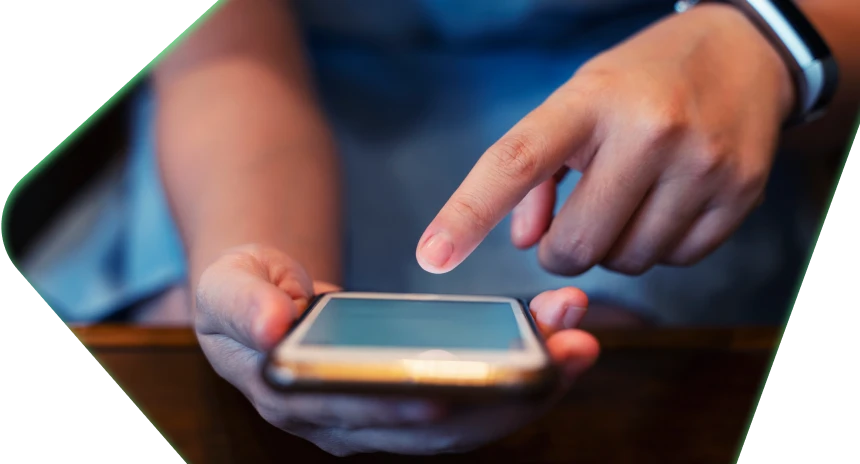Digital banking is on the rise. So too is digital fraud. Fortunately, today’s biometric authentication lets banks and credit unions know who’s on the other end of a remote transaction. That could be great protection for the nearly 215 million people whom experts predict will regularly bank online in the U.S. in 2022.
The financial industry is a prime target for fraudsters, and the need for security has never been greater. Users want secure transactions, but they also want a frictionless experience. Biometric authentication provides both. It is a viable and fast alternative to usernames and passwords, allowing banks and credit unions to verify customers and meet Know Your Customer (KYC) requirements from wherever they bank.
What Is Biometric Authentication?
The financial services industry moved beyond simple PINs and passwords quite some time ago. But even with device IDs, one-time passcodes and double authentication methods, banks and credit unions need to do more. That’s where biometric authentication comes in.
Biometric authentication uses technology to identify a person based on some part of their biology. The fingerprint was one of the first examples, being a unique and easily obtained marker. Both fingerprint and facial-recognition technology are in mainstream use today via mobile phones and computers. The iPhone 5s, launched in 2013, was the first to the party with a fingerprint reader. Apple Pay now uses pay by touch with mobile devices, and bank call centers use voice ID.
In banks and credit unions, there is a huge opportunity for biometrics. There may be no better way to open a new account, access an ATM or bank online. Biometric authentication is secure and easy.
And it’s not just banks. In 2021, the New York Mets began a pilot program to enter the team’s Citi Field stadium by verifying visitor identity with your face. You could already buy your beer with a fingerprint.
Benefits of Biometrics
Biometrics protect against identity theft, account takeovers and fraudulent activities. Banks and credit unions can verify new and returning users upon log-in or through the onboarding process.
Further, biometrics facilitate the onboarding process, making it more efficient and accurate. Digital banking greatly reduces the cost of onboarding a new customer compared with in-person banking. The American Bankers Association estimates that new-customer acquisition can drop from $280 to $120 in the initial years. In subsequent years, that cost can go down as low as $19. Biometrics can slash costs even further by reducing operating expenses and mitigating risk, since the technology offers greater accuracy and is not prone to human error.
5 Types of Biometrics and How They Work
Biometrics can be used for identification in onboarding, authenticating mobile banking apps and completing ATM transactions and calls to the branch or service center. There are several types of biometric authentication currently used in the financial services industry for digital banking. They may be used alone, but are most likely to be used in combination.
- Voice
Voice authentication has progressed with new technologies allowing voice biometric engines to operate accurately even after not hearing a voice for an extended period of time. This popular technology identifies the unique characteristics of the user’s voice. Rather than relying on predetermined phrases, the voice is passively captured from a normal conversation. .
- Fingerprint
Fingerprint scanners are the most popular and common method of biometric authentication. These devices are small enough to incorporate into a laptop or mobile phone. The scan captures the unique patterns in the fingerprint and sends the image to a database where it is matched to a reference number or PIN that serves to identify the person’s name or account number. Fingerprint data is nearly impossible to copy or steal. The limitation, of course, is that not everyone has a fingerprint-enabled device.
- Face
Facial recognition generally requires the user to take a selfie and submit it along with a government-issued photo identification card. According to estimates by the advisory firm Aite-Novarica, approximately 15% to 20% of U.S. financial institutions are using selfies, primarily through their digital channels, to authenticate users. Artificial intelligence compares the images and a likeness check reveals whether the selfie is a live person or an altered photo.
- Iris
Iris scanners are easily installed on ATMs, and many mobile phones have them. BBVA was the first bank to provide access to its mobile app via iris scan, in 2017. They were touted as the next big thing five years ago, but the jury is still out on how popular they will be. Scanners illuminate the iris with invisible infrared light to find unique patterns.
- Behavior
Behavioral biometrics use machine learning to distinguish between actual users and a cybercriminal or automated attack. It works passively in the background to analyze thousands of parameters around how customers behave online, including what they know. This may include how they hold the phone, whether they type with their thumbs, how they scroll, even which keyboard shortcuts they use.
There are other authentication tools, including palm scans and retinal scanning. However, these options have limited utility for digital banking. Several foreign banks are using palm-scan ATMs. Currently, retinal scanning is a very expensive option that isn’t feasible online.
The Future Is Biometrics
In 2020, there were 400,000 cases of credit card fraud alone. This doesn’t include identity theft, account takeovers and other cybercrimes. In an increasingly digital world, security is of utmost concern, and not just for the wealthy. Everyone is a target. Most people have been victims of fraud in the past and recognize their vulnerability going forward. Although users want a seamless experience, they also want to trust that their bank or credit union will protect their assets and their identity.
Biometrics provide a viable and effective way to change how banks and credit unions manage these risks in the future. When it comes time to select a technology platform that can give your bank or credit union the flexibility it needs right now, you need a partner you can trust. Request a demonstration from Lumin Digital.
Pamela Michaels Fay is a business, financial, technology, legal and lifestyle writer, whose work is informed by over 20 years of strategy, leadership and organizational development consulting for Fortune 500 companies.
Sources
Safe at Last – 18 Online Banking Statistics You Need to Know in 2022
NFCW – New York Mets to roll out contactless facial ticketing and access control at Citi Field ballpark
Axios – Biometrics invade banking and retail
American Bankers Association (ABA) – Digital Onboarding and Origination: The Cure for Banks’ Customer Acquisition Pains
American Banker – Facial recognition tech is catching on with banks
BBVA – BBVA, the first bank with access to its mobile app via iris scanning, thanks to Samsung
Cedar Point Federal Credit Union (CPFCU) – Palm Vein Authentication With MyPalm
Experian – Steps to Take if You Are a Victim of Credit Card Fraud

